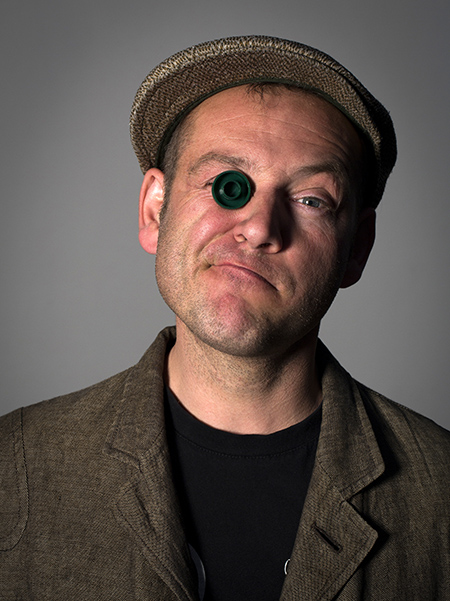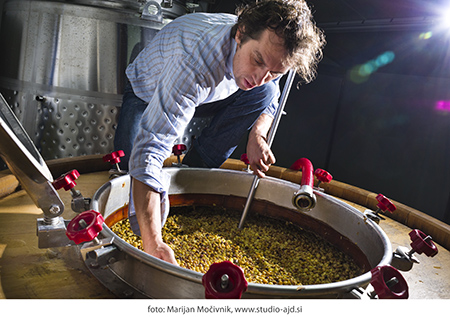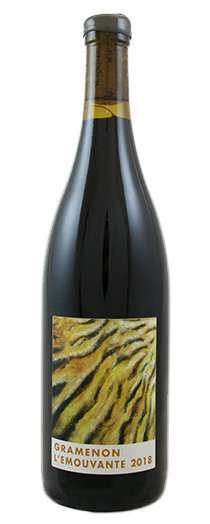June
“I want to say, in all seriousness, that a great deal of harm is being done in the modern world by belief in the virtuousness of work, and that the road to happiness and prosperity lies in an organised diminution of work.” – Bertrand Russell, In Praise of Idleness
May segued effortlessly into June, the radiant weather continued, the balcony was deployed to its utmost – if lounging around on one’s gluteus maximus guzzling tea, cooking one’s flesh to gravy-browning brownness and battling through the verdant undergrowth of Russian literature constitutes deployment – or even employment. The bees buzzed lazily, the clouds were conspicuously absent, the city no longer William Cobbett’s disparaging “Great Wen” (meaning a sebaceous cyst), rather a giant slumbering village. This is a partial and privileged viewpoint; those who were working – nurses, doctors, teachers, carer, public transport workers, people in shops – had, in many cases, to work harder than normal to keep the machinery moving.
“I’ll put a girdle around the Earth in forty minutes.” I don’t know if gentle Puck had access to Zoom (I suspect not), but the Pyrennies got girdling, increasing the frequency of the grower “visits”. Our first rendezvous this month was with Andrea Occhipinti in his attractively-situated vineyards overlooking Lake Bolsena in Tuscia, a region in Upper Lazio. Bolsena is the largest (crater-shaped) volcanic lake in Europe with hills rising up each side to the tune of 350-400 m. The views down to the lake were spectacular. Andrea is an advocate of the local Aleatico grape – a genetic relative of the black muscat grape – which he makes in various styles, including a bitter chewy-cherry red, a brilliant deep Rosato and, surprisingly, a garrigue and straw-scented white (straight press). Aleatico also blends with Grechetto Rosso in his red wine called Arcaico. We (or rather Andrea and Dario, our cameraman) strolled, and even wheezed, up the very steep road to the winery, where reception cut down. We did see a host of amphorae sitting just outside.
The next visit was to Clos des Vignes du Maynes to meet the irrepressible Julien Guillot, a bouncing ball of energy, baseball cap at a jaunty angle, forever wreathed in smiles and a twinkle-eyed suggestion that a dirty joke was never far from his lips. We were taken to the legendary “Clos” vineyard, with its drystone walls and mineral-embedded soils.

Part of the vineyard is a kind of nursery planted with a range of massale selection vines. Julien is also engaged in a project to rediscover the original Burgundy grapes, the parents of Pinot and Chardonnay. We even saw some young plantings of Gouais Blanc. Eventually, these grapes will be used in a field blend for one barrel of original, very original, wine. Cuvée 910 was the original nod to the distant past, when the monks of Cluny co-planted various varieties and no doubt tasted the soils to find the best spots, thereby inventing terroir as we know it. A blend of Pinot Noir, Gamay and Chardonnay, it always has wonderful energy and lightness.
By the way, one can easily imagine Julien licking the stones in Clos des Vignes du Maynes!
Julien rattled through so much. How progressive Macon was in terms of organic farming in that even the caves co-op had embraced the principles. The variegated stony soils. How biodynamics is used. The effect of global warming on farming methods and harvest dates. There was a lot of ragging of Jean-François Ganevat whom Julien seemed to suggest was his next-door rival/neighbour, 90 km to the east. We ended up in the winery where Julien poured himself a healthy slug of Bourgogne Rouge Les Crays from the barrel and with an enormous grin, raised a glass to us. As we did, figuratively-speaking, to him.
The following week saw us at Posestvo Burja in Podnanos, situated in the Slovenia’s Vipavska Dolina (Upper Vipava Valley) with our genial and articulate host, Primoz Lavrencic. This is a remarkable region and I was keen for my colleagues to catch a glimpse of the scenery and also to understand the cultural history of this part of Slovenia. Primoz explained that rich descriptions of Vipava viticulture and winemaking can also be found in winemaking for Slovenes (Vinoreja za Slovence – the first Slovenian book on viticulture) written by Matija Vertovec in 1844.
According to location and natural geographic features, the Vipava Valley is very much betwixt and between, wedged between the Trnovo Plateau to the north, and Karst to the south, a mixture of Alpine, Mediterranean and Continental climates. The Vipava Valley is also the windiest part of Slovenia, noted for the gusts of its famous wind which blows with furious gusts – the bora (burja), which gives its name to the winery.
Primoz is now fully practising biodynamics and should receive certification for this vintage. The vines looked in cracking condition – we were in the vineyard where the Zelen grape is planted. With Primoz giving us some panoramic shots of the hills/mountains and forests, one was easily transported to the dramatic location.

Rosé wines are either milquetoast, metallic and dry, or a bubblegum confection of cold fermentation and strip filtration. And then there is a style increasingly favoured by natural vignerons, which is to blur the boundaries between red and skin contact wines and to leave as much material in the wine so that it is gastronomic and not simply shiny-shiny. We will encounter some of these wines shortly.
It is very easy to get distracted by social media. Instagram is just a succession of food and wine porn, until travel restrictions ease and then will be awash with selfies on impossibly deserted beaches framed against turquoise seas. Facebook has become an anger vent. And not just for obvious political argy-bargy. It is that opinions are now as inviolable as political convictions/prejudices. No-one, no matter how the evidence is portrayed, will budge an inch. For example, someone posted an image from a website of gunowners being rounded up and being put in a concentration camp and used it as a call to arms for gunowners against this secret agenda of the Democrats and Liberals. Click on the image and it is a satirical website that uses such images as clickbait to ensnare gullible conspiracy nuts. There is even a big disclaimer in capital letters – THIS IS A SATIRICAL WEBSITE. Ironically, the images alone are being shared and no-one is reading the content of the web page!
Yes, politics is more-and-more white noise, inane and even insane heckling from the trenches and often from behind the veil of anonymity. Our teeny world of natural wine is occasionally sucked into vacuum of pointless point-scoring and logical fallacies.
For example, someone posted a picture of a bottle on their FB timeline the other day and complained that the wine therein exhibited various faults that made it nigh-on undrinkable. Fair enough, although we haven’t tasted the wine, we can accept that that bottle at that time may well indeed be guilty of the accusation. It being a natural wine, however, it was not enough that someone had had an unpleasant experience with a natural wine, that the usual suspects felt obliged to weigh in with their negative experiences and supportive vom emojis. People seem to forget that faulty/flawed isn’t the sole preserve of natural wines and the result of natural winemaking, and that it is perfectly possible to make great wine without the use of sulphites and this is by design rather than a fortuitous concourse of wine atoms.
There is also the absolutism of those who conflate “natural” with “faulty” without defining what they think natural is. So, I thought I would rehash my spectrum of wine styles that range from juice that is only held together by chemicals additions and denatured to the point of scarcely meriting the description “wine”, through the various conventional approaches, to less interventionist styles and finally to naturally-made wines. Important to bear in mind that natural wine itself is a broad spectrum and that there may be a thousand reasons why the wine is the way that is.
The Natural Wine Forum, which I dip into occasionally, has witnessed myriad threads arguing about definitions of natural wine. Some seek to post wines that are organic or biodynamic, but are made with selected yeasts and various interventions. The definitions may be soft at the edges in that one has to constantly define one’s terms to accommodate every different circumstance that might take place and assert that it either falls within and just outside the determination of what is natural. For me, it is a feeling and I always think of John Clare’s poem:
All nature has a feeling: woods, fields, brooks
Are life eternal: and in silence they
Speak happiness beyond the reach of books;
There’s nothing mortal in them; their decay
Is the green life of change; to pass away
And come again in blooms revivified.
Its birth was heaven, eternal it its stay,
And with the sun and moon shall still abide
Beneath their day and night and heaven wide.
The numbers don’t make a wine natural. A wine is natural by sensation of its being natural.
Seven Steps to Natural Disambiguity
1. Unwined. At the extreme of denatured wine is a mass of grape juice with chemical intercessions at every stage of the manufacturing (sic) process from the intensively-farmed vineyards to the wines themselves which are controlled and manipulated to the minutest degree. The wine has no choice in the matter – it is basic juice to be transformed into something notionally called “wine”. These mass-produced wines may be found lurking on the shelves of cash & carries and supermarkets or less discerning pubs. At their worst they are unhealthy and excessively sulphury, at best chemically inert and anodyne. Moreover, the exploitation of the land through the remorseless creation of an arid monoculture, is the unacceptable face of industrial farming.
2. Chemi-quaff. A profiled product deriving from technological control from grape to bottle. No one ever picked a grape by hand or put one in their mouth and nothing is selected by intuition; meanwhile, computers measure and therefore dictate most choices in the winery and the recipe on the back of the packet for winemaking is followed oh-so-diligently, but the wines themselves – through a mixture of better-quality juice and more judicious winemaking – are perhaps slightly greater than the sum of their chemicals. They possess an iota of personality by means of either varietal definition or drinkability (albeit through sheer lack of complexity). The difference to (1) is that although stability is still prized above terroir expression the interventions mark the wines less egregiously. Supermarket and high street fodder generally, also tend to be the “house wines” sourced from co-ops and cantinas by wine merchants looking to develop a style that doesn’t taste (luridly) chemical.
3. The middle ground. Inhabited by wines made reactively – though often with the best of intentions. The farming method is called lutte raisonnée with chemical intervention employed when the situation warrants it. This begs the question how much and what kind of intervention is acceptable, when they should be used, and how they should be monitored. It’s the half-way house of agriculture where symptoms, rather than the causes of the maladies are treated, as opposed to a holistic approach which seeks to address and solve problems at root. Nevertheless, the wines themselves may be technically sound and reasonably balanced with virtuous terroir expression if the winemaking is less obtrusive.
4. Extracto-philia (sometimes known as underwined oak) Organic or biodynamic viticulture will create the preconditions for healthy grapes, but certain vignerons seek to create powerful and monolithic wines which are not a sensible reflection of the terroir. For whatever critical reason. Oenological tropes are used to layer on desirable flavours and textures (think 100% new oak, micro-oxygenation, spinning cones and various techniques of tannin management) and confer a seemly cut to the emperor’s exceedingly bulky new raiment. Driven by a desire to create something iconic and critically desirable and thus to be part of the gold standard of wines that may command higher prices, new oak is lavishly employed– its presence serves to make the wines more expansive (possibly), certainly more expensive, by definition, and confers pseudo-gravitas on the whole production. Extracto-philiac wines are where the maquillage masks the beauty of the terroir.
5. Virtuous simplicity. Reflecting typicity of vintage and terroir, wines that are revealed by sensitive winemaking. Chemicals (in the vineyard), seen as a negative intervention, inhibiting those nutrients in the soil that give life and energy to the wine, are used sparingly, if at all, and alternative solutions explored. Vigilance is required to avoid the monolithic wines in (4) – grapes have to be harvested the moment they reach maturity (and no later). These wines will normally see little or no new oak, will ferment with natural yeasts (although that fermentation will be controlled) and will be bottled with light or no filtration or fining.
6. Approaching zero. Wines made without chemical intervention in the vineyard (natural remedies to diseases and pests are always sought) and with total respect for the ecological health of the local environment. Philosophically and practically speaking this is biodynamics, an integrated, progressive agricultural approach. Most procedures are done by hand with meticulous care (this is back-breaking work) for the natural well-being of the vineyard is paramount if grapes full of ripe sugars, great acids and all the natural preservatives that will assist in a natural fermentation are to be obtained. Selection is key (yields will necessarily be low). Subsequent fermentation is spontaneous (pied de cuve may be used), at ambient temperatures, sulphur will be used sparingly (and only as necessary) and usually at the final racking before bottling, and the wine will normally be unfiltered and unfined to preserve as much of the authentic appearance and flavour as possible.
7. Nature red in tooth & claw. Finally, there are the zero intervention wines – the step into the unknown without a safety net. The vigneron is a physical rather than a chemical guide in the process here, working, monitoring and nurturing without relying on additives. The result can either be ur-funky and arhythmic or possess a beautiful harmony and have unparalleled precision and purity – or be somewhere in-between!
It is important to understand that we are not talking about wine thus: “this is the formula of natural wine, now go out there and make it.” Surely, natural wine is understanding and harnessing the natural processes in as gentle a way as possible. In terms of organic viticulture, it is much more than not using proscribed chemical fertilisers or herbicides, for example, as much as it is about preconditions of farming, the setting up of an ecosystem so that the vines become healthier and more adaptive. It is about working the soil, developing a welcoming environment for the micro-organisms and nutrients which help the vine to thrive; it is about pruning and canopy work; it may even be about replanting and finding a better vineyard location, it will be about keeping on top of the work in the vines. It is understanding the environment and its balance. All this before any grape has been picked.
***
At the end of May in Minneapolis, a young black man called George Floyd was killed, suffocating to death whilst a policeman forced his knee against his neck. Over the next few weeks, we would see outrage and anger pouring out onto the streets in demonstrations and vigils, not only in American cities, but throughout the world and the rise of the #blacklivesmatter movement. This is not the forum to explore the ins and outs of institutional racism, but we were reminded that these issues need addressing with concrete action and our view of history itself needs to be examined and reassessed.
I watched Sitting in Limbo (BBC One), a gripping, upsetting and tenderly told memoir of one man’s ordeal during the Windrush scandal. Its timing could not have been better. One modest request of the Black Lives Matter movement is that people listen to the realities about black lives. The stories from the Windrush affair are harrowing, and even now are not understood.
***
Look Forward in Amber
Was just sent a snippet of the new documentary called Call It Amber featuring a bunch of orange luminaries, plus yours truly pontambercating*. Given that my only other filmic foray was in the doc called Skin Contact, and that I wrote the intro for Amber Revolution, you could say that I am as qualified to be orange as Donald Trump in a crowded room of oompaloompas. Or amberloompas.
In June I consumed even more of these colourful wines. I am drawn to them because of the colour, but even more to do with the quality of that colour, its turbid depths and suggestion of layers to be peeled back. The wines are not aromatic in the obvious confected sense, but in the real way of having a living warmth to them.

* pontificating about amber wines (a portmanteau coinage).
Nando Rebula Blue Label, Goriska Brda, Slovenia
Golden, verging on amber. Warmth and generosity, soft and lanolin.
Camillo Donati Piccolo Ribelle, Emilia
Frizzante Barbera, wild berry fruit, a pucker of prickle.
Dolium Red Zorjan, Stajerska, Slovenia
Dense purple robe (as they say in winespeak), brilliantly crunchy, vivid wild cherry fruit, stones and minerals. From Zweigelt.
Andert Gruner Veltliner Anadjucka, Burgenland
A sample bottle left over from the last wine fair. Skin contact, little plums and cherries, exotic spice.
Baccabianca, Tenuta Il Grillo, Piemonte
One of my wines of the year. Cortese with around four weeks on skins. Utterly complete and beautiful, like a watching a sunset with a glass of your favourite amber wine in hand.
La Garagista Harlots & Ruffians, Vermont
A delight, a blend of hybrid grapes given the skin contact treatment. Like walking through an alpine meadow carpeted with wild clover.
Sister’s Kisi, Kakheti, Georgia
Kisi is so exotic and this version is wonderful. A cross between a peach tea and a sake.
Niki Antadze Rkatsiteli Kakabeti, 100-year-old vines, Georgia
One of the greatest Rkatsitelis (imho) from centenarian vines. It glows. It has the wisdom of old age and the indestructibility of youth.

Gramenon L’Emouvante, Southern Rhone
Moving wine, indeed. Pure – and I mean pure – Syrah. Lyrical and hih-toned, difficult to imagine this is from the southern Rhone.
Stagbeetle, Andreas Tscheppe, Styria
Sauvignon with its pincers around a dollop of Chardonnay, given three weeks plus maceration and long-ageing in beautiful big barrels. A classic.
Blaufrankisch Hochacker, Franz Weninger
Wow – this is good. Firm, strikingly peppery, acidity flowing to all parts. No sulphur added.
Riesling, Marto Wine (2018)
A chance to compare 18 to the cooler 17 vintage. Feels cool too, with that classic Marto acidity pinging all parts of the tongue.
Segelfalter, Andreas Tscheppe, Styria
The most charming of the Tscheppe stable being floral Gelber Muskateller with its aromas of elderflower and white peach.
Rabasco Cancelli Rosato, Abruzzo
It’s the full Monte(pulciano), Rosato style. Goes with the roar of the suntan lotion.
A Demua, Cascina degli Ulivi, Piemonte
3 weeks on skins from Stefano Bellotti’s 100-year-old co-planted vineyards of old varieties. A walk on the wild side.
Jeudi 15 Vino Rosato, Vino di Anna, Etna, Sicilia
Latest vintage (19) still to find its feet. The 18 was sensational.
Andert PM, Burgenland, Austria
The last bottle of Andert’s Petit Manseng (blend) and a sheer delight. Tropical fruits and wild herbs.
Alex Bain Mademoiselle M, Pouilly-Fume, Loire
This cuvee is the most beautiful Pouilly-Fumé. It has weight, yet is light, has aroma, but majors on texture, shows varietal character yet is all about the terroir. And is damned delish!
Vodopivec Vitovska, Carso, Friuli
A skin contact wine of unparalleled depth. It is serious, a wine to reflect over, to sip and to fall gently into its amber depths.
Vipava Rosa, Burja, Slovenia
More than frivolous Pinot Gris with some skin contact, almost light red in colour with warmth and spice a-plenty.
Vino di Anna Palmento Bianco, Etna, Sicilia
Grecanico x 2, with and without skin contact, and a digest of other Etna white grapes. Very solid white, properly unfiltered, excellent weight in the mouth.
Burja Zelen, Vipava, Slovenia
From the super-indigenous (to this tiny part of the Upper Vipava Valley) Zelen grape, perhaps one of the noble grapes of this region. 7 days on skins, the whole shebang fermented and aged in eggs.
Zorjan Cuvee, Stajerska, Slovenia
Blend of Laski and Renski Rizlings, part in amphora and qvevri. The Zorjan wines have been my lockdown (re)discovery. So powerful, so natural, so intensely whole, as if every atom of wine was simultaneously all the others.
Semplicemente Vino Bellotti Rosso, Piemonte
Meat stock Dolcetto meets very cherry Barbera in the Bellotti’s triple A entry level red. Good juice.
To be continued…
*
Interested in finding more about the wines mentioned? Contact us directly:
shop@lescaves.co.uk | sales@lescaves.co.uk | 01483 538820
*Note: We are still open for business, doing deliveries, and keen to help everyone with their booze needs in this difficult time. Natural wine lovers can visit our online shop and order online!

